The major tourist spots easily reachable without a car in France: Mont-Saint-Michel, Puy de Dôme, Pont du Gard…
Although far from the cities and major roads, some French tourist spots are easily reachable by train or shuttle bus. Let’s have a look at these natural or heritage monuments where pedestrians are welcome.
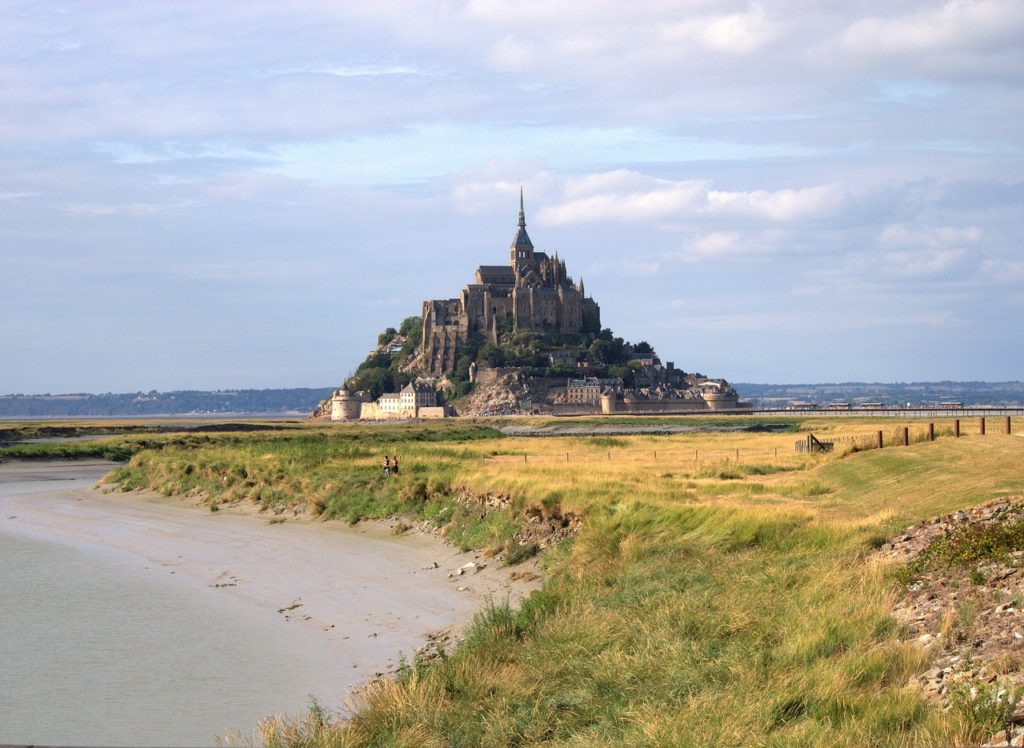
They are monuments, natural sites or heritage treasures that make France famous throughout the world. Labelled or listed as UNESCO World Heritage sites, these major tourist attractions are usually far from cities and major roads.
However, some are linked directly by train or shuttle bus from the nearest station. This makes them easily accessible to pedestrians. The Grands Sites de France network also lists several “car-free nature getaways” to be enjoyed on foot, by bike or by train.
Here are ten monuments, and natural sites in France to discover without a car.
Mont Saint-Michel Bay (Baie du Mont-Saint-Michel)

Listed as a UNESCO World Heritage Site since 1979, the Mont-Saint-Michel Bay (Manche department) draws the border between Brittany and Normandy… so much so that the two regions have always been at odds with each other.
The rocky islet surrounded by quicksand is dominated by the Benedictine abbey founded in 966. A “Bastille of the Seas” which over the centuries became an important religious and military site, and even a prison in the decades following the French Revolution.
Several times a year, when the tidal coefficient exceeds 110, Mont-Saint-Michel cuts itself off from the continent and becomes an island again for a few hours. A show to be experienced mainly in October.
How to get to Mont-Saint-Michel without a car?
Until September 27th, the Normandy region is experimenting with a direct railway line between Paris Montparnasse and Pontorson, from where a shuttle bus runs to Mont-Saint-Michel (4h36 in total). The single ticket is sold at the unique price of €27.
Outside the summer period, the journey to Pontorson from Paris involves a change at Caen or Rennes.
The Puy de Dôme volcano
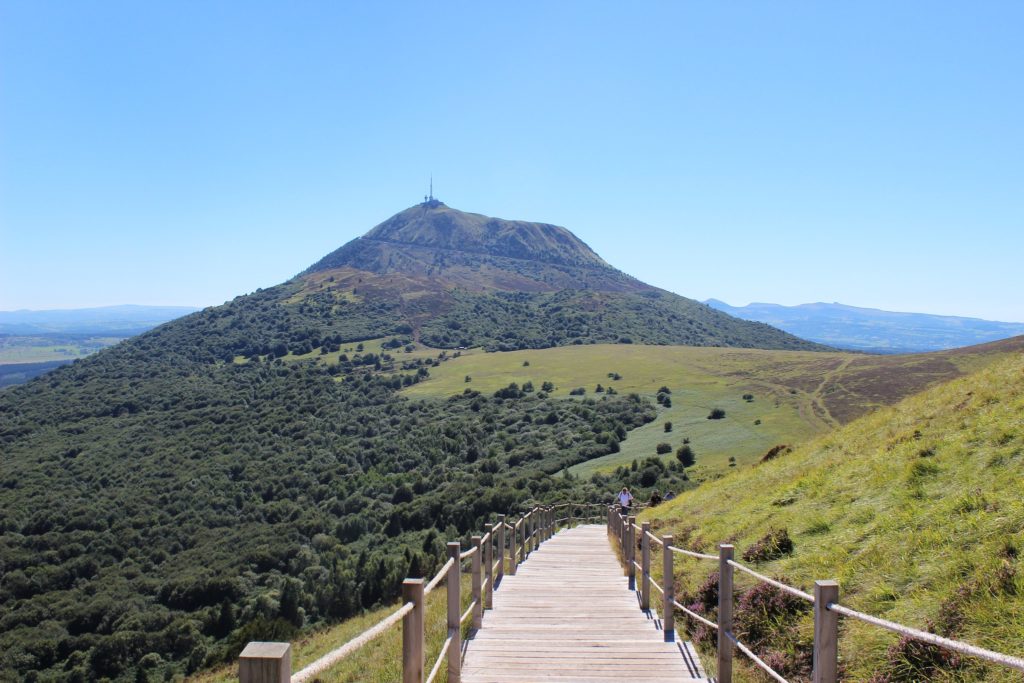
From its height of 1465 metres, the Puy de Dôme is not the highest volcano in the Auvergne (this title goes to the Puy de Sancy), but it is definitely the best known.
Situated 15 km from Clermont-Ferrand, this dormant volcano, built 11,000 years ago, offers a 360°C view of the Puys – Faille de Limagne chain, a tectonic prime spot listed as a UNESCO World Heritage Site since 2018. At its summit, the remains of the Temple of Mercury, built in the 2nd century AD, one of the largest mountain sanctuaries in Roman Gaul.
How to get to the Puy de Dôme volcano without a car?
From the city centre of Clermont-Ferrand, take the shuttle bus to the Panoramique des Dômes railway station (35-minute journey, one every two hours between 8.45 am and 6.45 pm, only runs from May to November). From there, you can reach the peak on foot (45 minutes to 2 hours depending on the trail) or by electric rack and pinion train (15 minutes, every 20 to 60 minutes depending on the season).
The Pont du Gard bridge
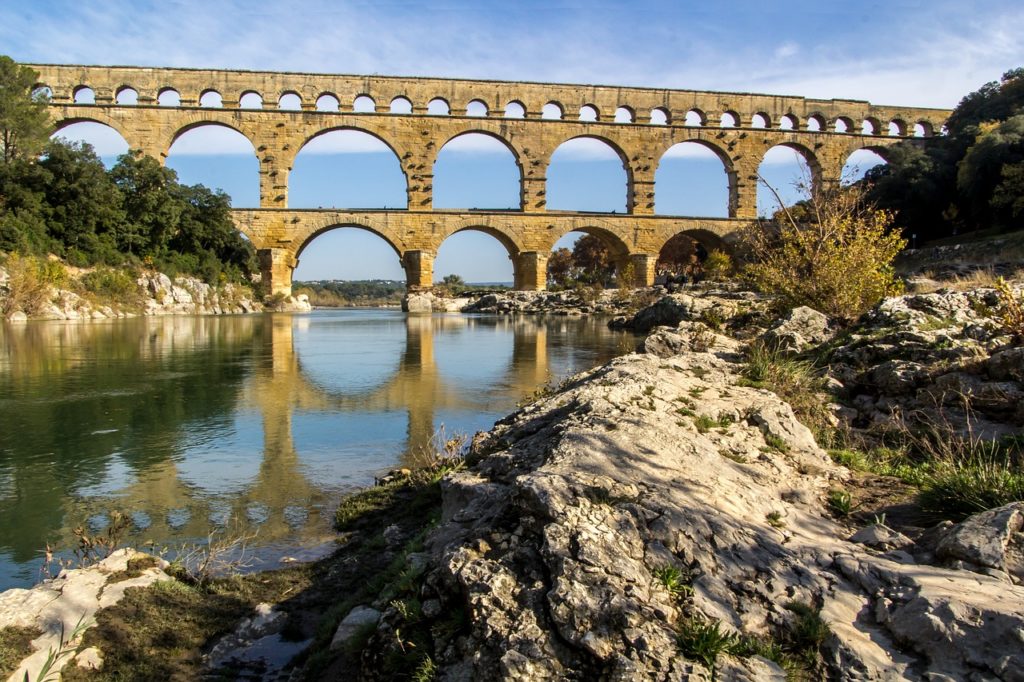
To supply the fountains, the thermal baths and the houses of Nîmes (Gard department, southern France), the Romans built an aqueduct in the 1st century AD which started from the Eure fountain, near Uzès.
An ingenious work extended over 50 km, of which the Pont du Gard is the most impressive part. This masterpiece of ancient architecture with three levels of arches is 275 meters long and 49 meters high.
If it is possible to reach it free on foot via several paths, the site of the Pont du Gard has a paying main entrance where there is a museum on Roman culture.
How to get to the Pont du Gard without a car?
From Avignon bus station, take bus 115 of the Edgard network or bus 121 (40 minutes). Line 126 also serves the site from the new Nîmes Pont-du-Gard station.
Dune of Pilat (Dune du Pilat)

Situated a few kilometres from Arcachon (Gironde department, southwestern France), the Dune of Pilat is the highest in Europe. A staircase makes it possible to climb this 106 m high mass of sand, although it is more fun to climb it with your feet in the sand.
Once this effort accomplished, it reveals a magnificent panorama, with the Arcachon Bay and the Atlantic Ocean on one side, and the pine forest of the Landes de Gascogne on the other.
In constant movement, the dune, classified as one of the Great Sites of France, moves a few metres each year according to the wind and the tides.
How to get to the Dune of Pilat without a car?
From Arcachon (1 hour from Bordeaux by TER regional train), take the Dune Express shuttle (25 minutes) or the Baïa bus line 1 (40 minutes).
In July and August, a maritime shuttle of the Union des bateliers arcachonais operates to the dune from Cap-Ferret.
Saint-Émilion
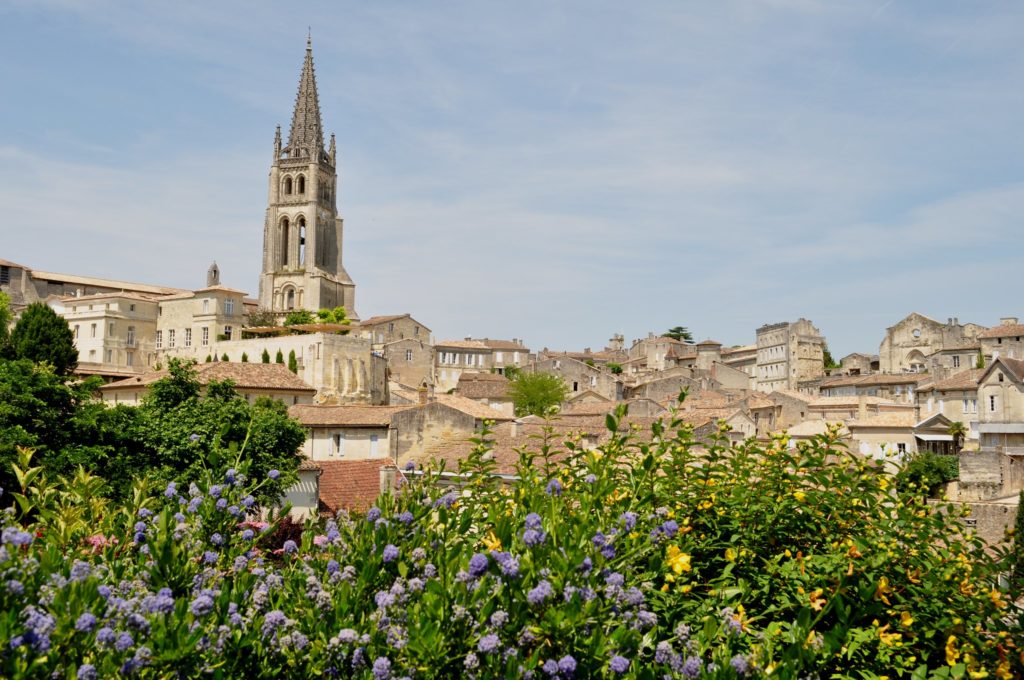
Its vineyard is the first to be listed by UNESCO as a World Heritage Site under the title of “cultural landscape”. If Saint-Émilion (Gironde department, southwestern France) has everything to delight wine tourism enthusiasts, the village can also be visited for its history, monuments and architecture.
Located 40 km from Bordeaux, the medieval city has the largest monolithic church in Europe. Dug out in the 12th century inside a limestone plateau, the building is 38 m long and 12 m high, with a bell tower that rises to 68 m.
The Saint-Émilion tourist office arranges guided tours (on foot or by bike) to discover the châteaux and the secrets of world-famous wine-making.
How to get to Saint-Emilion without a car?
From Saint-Émilion’s TER regional train station (30 minutes from Bordeaux), you can reach the centre of the village in 15 minutes on foot.
The Château de Chambord
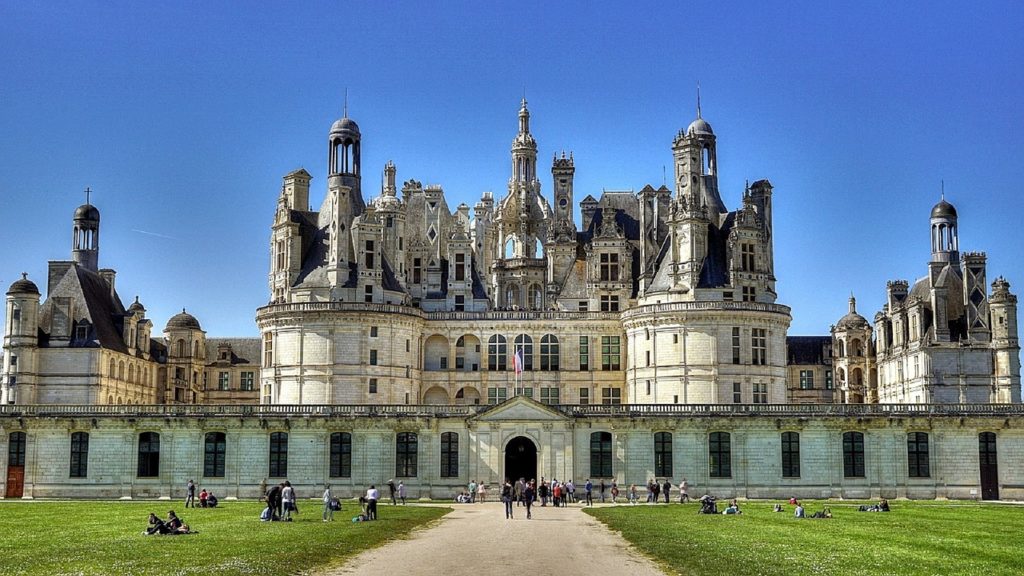
The Château de Chambord (Loire-et-Cher department, centre of France) is the largest of the “Châteaux of the Loire Valley”. Built in 1519 by order of François I (who finally stayed there only 72 nights during his 32-year reign), the building covers a 5440-hectare estate which today is the largest enclosed forest park in Europe.
Early autumn is the perfect time to watch the fauna, including deer, hinds and fawns.
In the centre of the dungeon, visitors will have fun walking up the double-revolution staircase, which allows someone going up never to cross the one going down. A work that would have been imagined by the friend of François I, Leonardo da Vinci.
How to get to the Château de Chambord without a car?
From Blois-Chambord station (1h30 from Paris Austerlitz by Intercités or TER, 45 minutes from Tours and Orléans by TER), take the Châteaux shuttle (25 minutes) which runs on some days from April to October. This shuttle also serves the châteaux of Villesavin, Cheverny and Beauregard.
READ ALSO – According to Tripadvisor, the “best restaurant in the world” is in France
Medieval city of Carcassonne
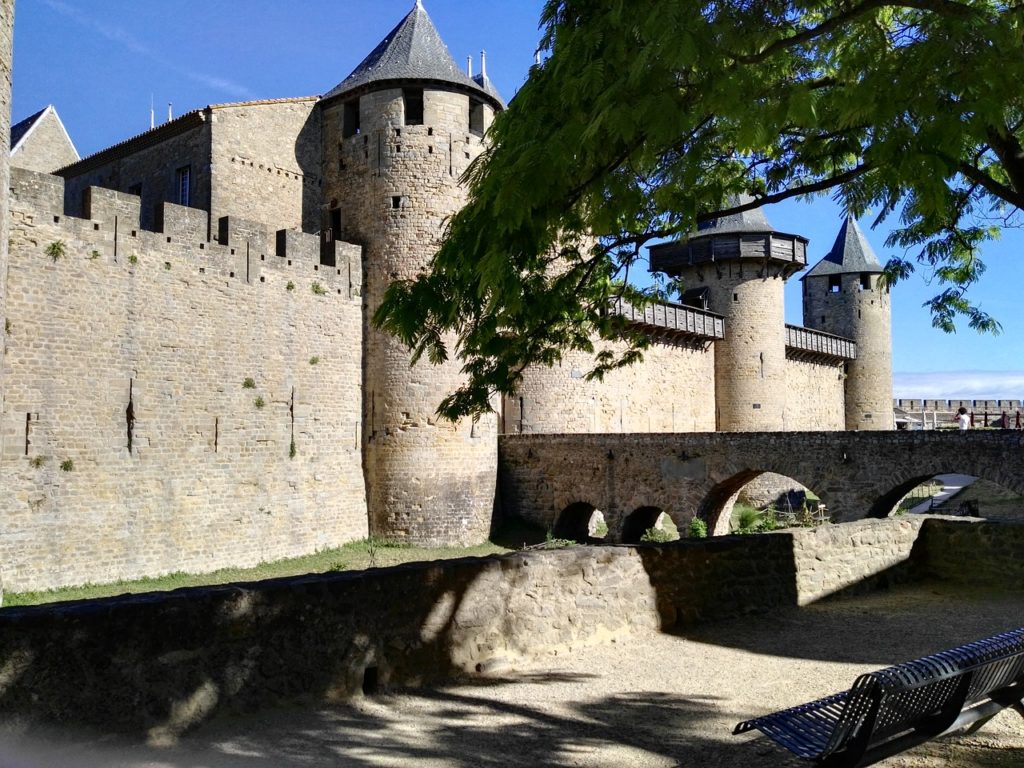
The medieval city of Carcassonne (Aude department, southern France) has been a UNESCO World Heritage Site since 1997 and has 52 towers behind its 3 km of ramparts.
Until the Treaty of the Pyrenees in 1659, it marked the border between the kingdoms of France and Aragon. Looted and threatened with destruction, the city was restored for almost 60 years under the leadership of the architect Viollet-le-Duc.
Although the city can be visited freely both day and night, it requires an entrance ticket to enter the county castle and walk along the inner ramparts.
How to get to the medieval city of Carcassonne without a car?
From Carcassonne train station (45 minutes from Toulouse), you can reach the medieval city on foot in 30 minutes.
Cap Blanc-Nez
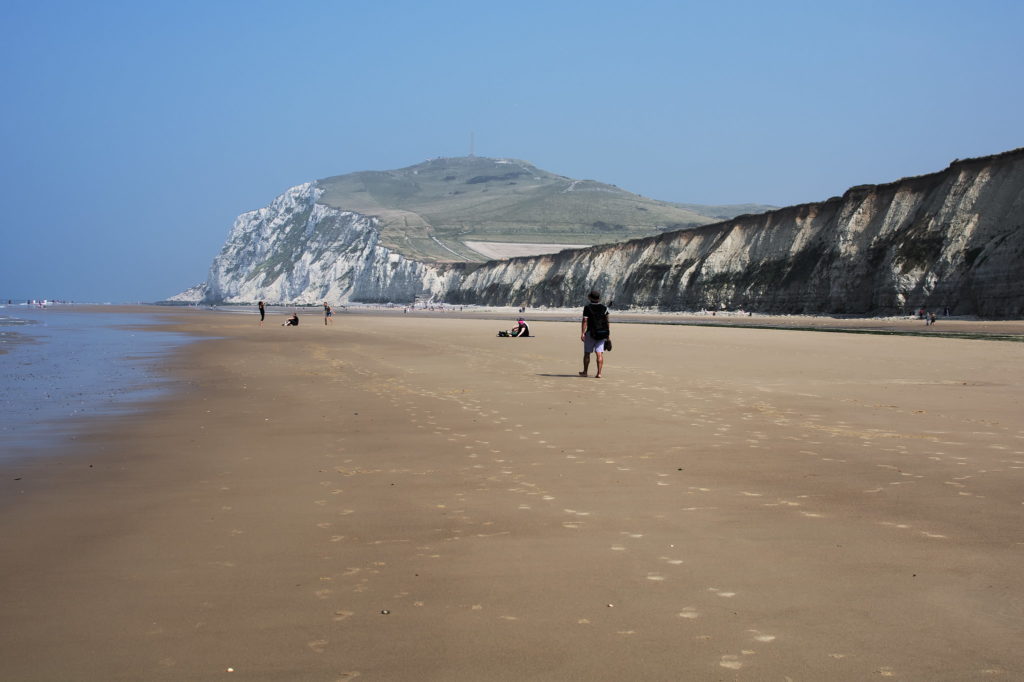
A member of the network of the Great Sites of France, Cap Blanc-Nez (Pas-de-Calais department, northern France) is one of the most striking landmarks of the Côte d’Opale and the Hauts-de-France region.
On a clear day, the English coastline is open to the view of walkers venturing onto this 134-metre high chalk cliff.
Several footpaths allow you to discover the Deux Caps site through meadows and rapeseed fields. The GR120 leads to Cap Gris-Nez 10 km further south.
How to get to Cap Blanc-Nez without a car?
From the city centre of Calais, take the Div’in bus line 5 to the Cap Blanc-nez stop (30 minutes, passing every hour).
The abbey-city of Cluny

Founded in the year 910, the Abbey of Cluny (Saône-et-Loire department, central-eastern France) remained the largest religious building in Europe (177 m long) until the construction of the St. Peter’s Basilica in 1506.
Proof of its religious, political and artistic influence in the Middle Ages, it is now one of the five French sites with the “European Heritage” label. Only a tenth of the original abbey remains, as a large part of it was demolished during the Revolution.
To enjoy the view over the abbey town, climb the 120 steps of the Tour des Fromages.
How to get to the abbey-city of Cluny without a car?
From Mâcon-Ville or Mâcon-Loché TGV station, take the Mobigo bus line 701 (20 or 35 minutes).
READ ALSO – Is France heading towards a revival of night trains?
Hospices de Beaune

About fifty kilometres from Dijon, Beaune (Côte d’Or department, northeastern France) is renowned for both its vineyards and its Hôtel-Dieu. Classified as a historical monument since 1862, the building has been remarkably well preserved since its foundation in 1443 as a hospital for the underprivileged.
This jewel of Gothic architecture is easily recognisable by its glazed and multicoloured tile roofs, which make up the identity of Burgundy. The museum houses a noteworthy work by the Flemish master Rogier van der Weyden, the Beaune Altarpiece (Le Jugement dernier).
The highlight of the visit is the Grande salle des pôvres, striking in its dimensions (50 m long, 16 m high) and its oak beams reminding the monsters of hell.
How to get to the Hospices de Beaune without a car?
From Beaune train station (20 minutes by TER from Dijon), the hospices can be reached in 15 minutes on foot.